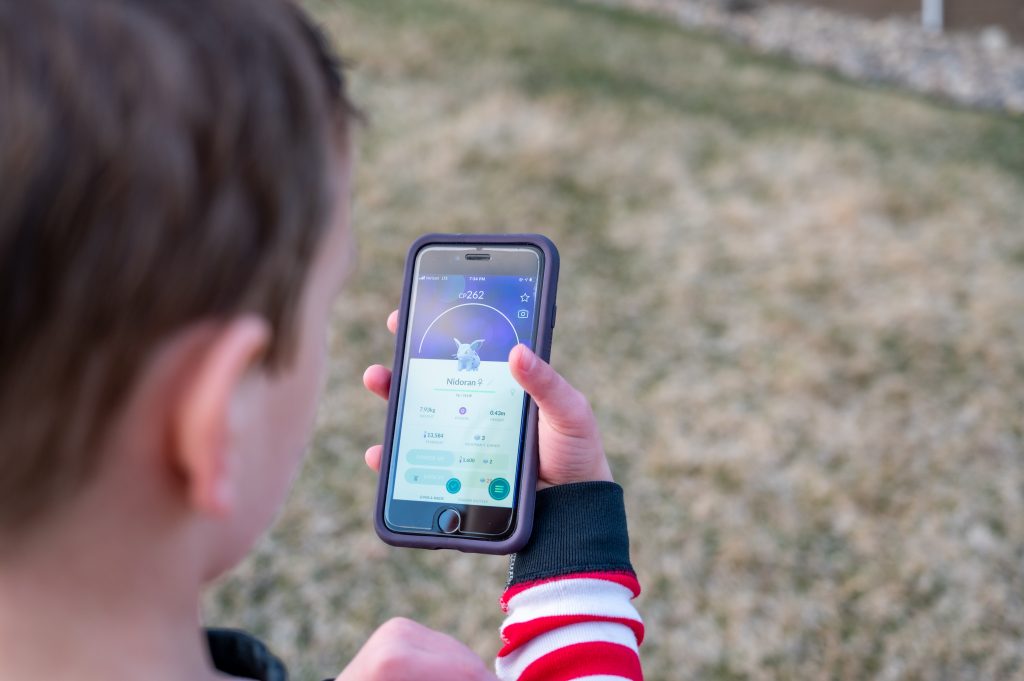
On July 6, 2016, more kids and teens were enjoying the great outdoors than any previous day that summer. It wasn’t because of beautiful weather or a fun scavenger hunt like you might think. Instead, it was due to the most unlikely of culprits: Pokemon.
When Nintendo released the mobile game Pokemon GO in the summer of 2016, it took the world by storm. Friends would get together and walk the streets, stopping at PokeStops and using their cameras in an attempt to “catch ‘em all.” By the end of 2016, the app had been downloaded more than 500 million times worldwide, and has since grossed more than $5 billion in revenue, according to Forbes.
However, like all mobile games and smartphone applications, Pokemon GO has some inherent safety concerns. You may be asking yourself, “What information does Pokemon GO share? What is AR mapping? Is Pokemon safe for my kids and my privacy?”
Before we can answer these big questions, we need to start with the basics: What is Pokemon?
What is Pokemon?
I applaud you if you’ve gone this long without hearing about Pokemon—especially if you have kids. When I taught elementary school, I couldn’t go one day without hearing about Pikachu or Jigglypuff! But what exactly is it?
In a nutshell, Pokemon (short for its original title “Pocket Monsters”) is a Japanese multimedia franchise about the namesake creatures and the humans, or Pokemon Trainers, that capture and collect them. It was first released in 1996 and since then, Pokemon has grown into a massive multimedia franchise featuring video games, movies, television shows, books, board games, stuffed animals, and even furniture.
What is Pokemon GO?
Pokemon GO is one of the most recent Pokemon releases. It’s a smartphone application and mobile game that uses GPS and augmented reality (AR) software to bring Pokemon to real life.
Players are tasked with exploring their neighborhood and catching Pokemon, while registering at real life landmarks, referred to in-game as PokeStops, to restock on supplies. Players can also hatch Pokemon eggs by walking distances ranging from 1km to 10km.
The goal of Pokemon GO is to get kids and teens to leave their basement and participate in a little physical activity—thus the “go” in the title.
What is AR mapping and how does it work?
Augmented reality (AR) is how Pokemon GO accomplishes its goal of bringing Pokemon to life. It utilizes your phone’s camera application to seemingly place the creatures in your living room—or wherever the camera is pointing.
So how do you scan a Pokestop AR? Once you reach level 20 in Pokemon GO, you are tasked with scanning a PokeStop to assist with “AR Mapping.” This is basically when the game asks you to take a 360 degree video of the real-world area you are in, in exchange for in-game rewards. For more info on AR Mapping, check out this article from the Pokemon Go website.
Is Pokemon GO AR safe?
Privacy wise, there is always the concern of allowing an application access to your camera. The Pokemon GO terms of service do state that your information and photos are never shared with third parties, but hackers and data miners may slip through the cracks. Thankfully, if you’re worried about Pokemon GO accessing your child’s camera, you can turn off AR functionality in the settings!
When it comes to Pokemon GO’s AR and your child’s physical safety, it’s a question of attention. Remind them to look up and watch where they are going while they play! After all, they are exploring the real world, and cars and bikes may not be as watchful as we would like them to be.
